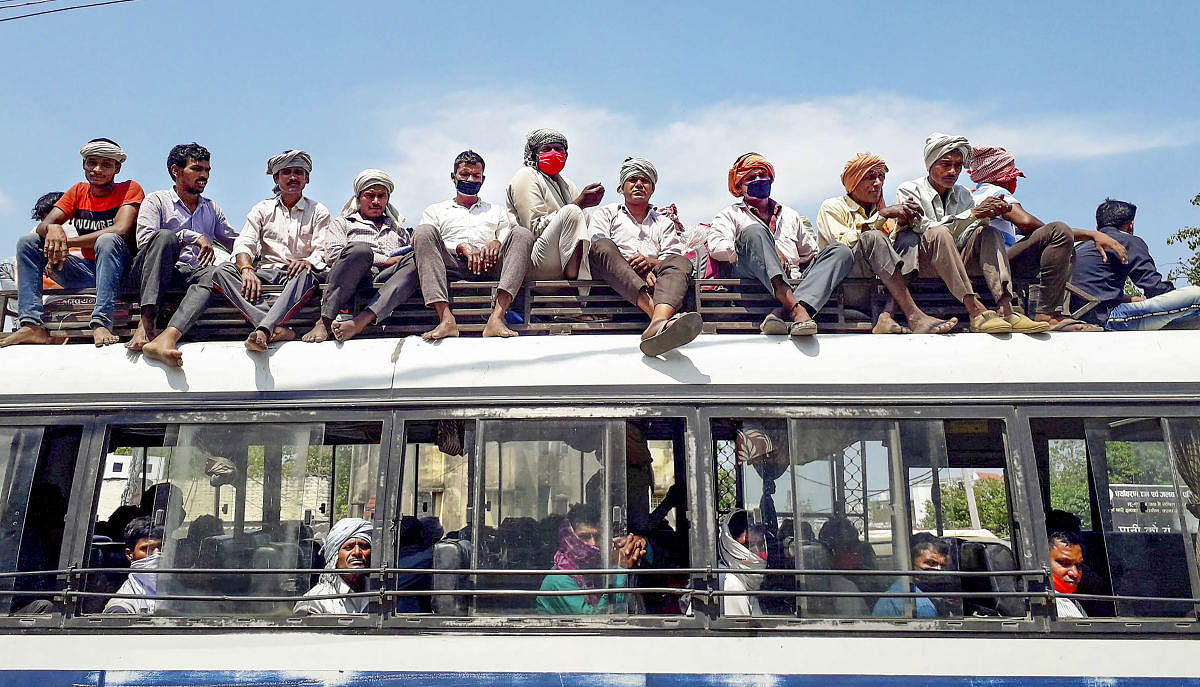
India has constantly been on the move. Though there are multiple dimensions to the movement observed in the country, some set patterns have become a norm over the years.
One of them is the accelerated growth of the migration of workers from the heartlands of the country to the urban spaces. ‘India’s soul’ that lives in its villages is increasingly crossing multiple boundaries in search of opportunities and a better standard of living.
This trend can be observed when we look at census data over the years, especially that of 2001 and 2011, which indicate the changes in migration patterns brought in by economic growth in the early 2000s. The annual growth rate of migration to urban areas for work has doubled between 2001 and 2011 (4.5% per annum) as compared to 1990 to 2001 (2.4% per annum).
But unlike other developing countries, India’s internal migration story is skewed toward intra-state migration rather than inter-state migration. The 2021 National Statistical Office (NSO) report on migration in India reported that intra-state migration accounted for 87.5% of total labour-related migration between 2020-2021, compared to inter-state migration, which comprised 11.8%.
Though proportionally fewer than intra-state migrants, migrants who have to cross state boundaries for work are naturally more economically and socially vulnerable than the former. The earliest data on internal labour migrants, based on data from the Indian Railways records an average flow of 9 million people between states every year between the years 2011 and 2016.
A significant proportion of the internal migrants in the country are short-distance migrants who engage in seasonal movements, are employed temporarily and come from marginalised sections of society. The 2011 census reports that the 51 million migrants moving within India constitute about 10% of the country’s labour force. The composition of migrant workers in the country was explicitly visible at the onset of the pandemic, wherein millions of migrants were left stranded and took to the roads to return to their homes.
Despite their importance to the Indian economy, the only piece of legislation drafted for the aid of migrant workers since the time of independence is the Interstate Migrant Workmen Act, 1979. Other labour laws that exist in the country are yet to adopt a migrant lens and do not necessarily address the problems of migrant labourers.
Studies indicate that unlike regular citizens, who can participate in democracy by casting their votes and hence hold the power to come forth with their problems to their representatives, short-term internal migrants are automatically excluded from this process.
They end up not having a voice in their place of work as they are not residents of the city and may not be in their native places at the time of voting. Thereby, they lose their vote and the political voice that comes with it.
Due to this, the problems of the migrant population are often neglected at institutional and policy levels. They suffer from various forms of social and economic exclusion, further worsening their invisibility. Responding to such criticism, the Government of India constituted the “working group on migration” in 2015 to address some of the problems identified above.
The recommendations made by the committee in their 2017 report indeed represent a positive stride towards understanding the importance of the inclusion of the migrant population in the country. Some of the recommendations include portable insurance systems, easier access to healthcare, education, upskilling programmes, access to formal banking and credit systems and, most importantly, revision of urban and rural empowerment policies at all levels to adopt a migrant lens to amplify the benefits of migration and make it more inclusive.
Most importantly, the committee recommended the revision of urban and rural empowerment policies at all levels to adopt a migrant lens and amplify the benefits of migration.
Though the Union government’s actions towards aiding migrant workers during the Covid-19 crisis in the form of portable ration cards and rental housing are some concrete efforts made in the right direction, the administration is yet to take into account intersectionality in migration.
NSO data from 2011 reports a higher rate of female migrants, which is 47.9% of total internal migrants as compared to 10.7% constituted by male migrants. The statistics show marriage as the reason behind 71% of total migration, with females constituting 86.8% of the same.
Though marriage is seen as a primary reason for migration among women, most of them later take up work. Hence, the notion of inclusion runs deeper and this is not reflected in any current policies pertaining to migrants. To ensure participatory democracy, it is important to widen the inclusivity gamut.
(The author is Chairman of The International Institute of Migration and Development.)